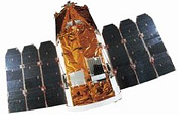Related Research Articles

An optical disc is a flat, usually disc-shaped object that stores information in the form of physical variations on its surface that can be read with the aid of a beam of light. Optical discs can be reflective, where the light source and detector are on the same side of the disc, or transmissive, where light shines through the disc to be detected on the other side.

Seagate Technology Holdings plc is an American data storage company. It was incorporated in 1978 as Shugart Technology and commenced business in 1979. Since 2010, the company has been incorporated in Dublin, Ireland, with operational headquarters in Fremont, California, United States.

GlassBridge Enterprises, Inc., formerly Imation Corporation, is an American holding company. Through its subsidiary, Glassbridge focuses primarily on investment and asset management. Prior to the name change, Glassbridge had three core elements: traditional storage, secure and scalable storage and what the company calls "audio and video information" products.

Iomega was a company that produced external, portable, and networked data storage products. Established in the 1980s in Roy, Utah, United States, Iomega sold more than 410 million digital storage drives and disks, including the Zip drive floppy disk system. Formerly a public company, it was acquired by EMC Corporation in 2008, and then by Lenovo, which rebranded the product line as LenovoEMC, until discontinuation in 2018.
DMD may refer to:
Versatile Multilayer Disc was a high-capacity red-laser optical disc technology designed by New Medium Enterprises, Inc. VMD was intended to compete with the blue-laser Blu-ray Disc and HD DVD formats and had an initial capacity of up to 30GB per side. At a physical level, VMD is identical to DVD, but with the possibility of using more layers.

The Holographic Versatile Disc (HVD) is an optical disc technology that was expected to store up to several terabytes of data on an optical disc 10 cm or 12 cm in diameter. Its development commenced in April 2004, but it never arrived due to lack of funding. The company responsible for HVD went bankrupt in 2010.
Taiyo Yuden Co., Ltd. is a Japanese materials and electronics company, situated in Kyobashi, Chuo, Tokyo, that helped pioneer recordable CD technology (CD-R) along with Sony and Philips in 1988. Founded 70 years ago, Taiyo Yuden currently operates factories in Japan, Singapore, Korea, China, the Philippines, Taiwan, and Malaysia.

Optical storage refers to a class of data storage systems that use light to read or write data to an underlying optical media. Although a number of optical formats have been used over time, the most common examples are optical disks like the compact disc (CD) and DVD. Reading and writing methods have also varied over time, but most modern systems as of 2023 use lasers as the light source and use it both for reading and writing to the discs. Britannica notes that it "uses low-power laser beams to record and retrieve digital (binary) data."

Mavica is a discontinued brand of Sony cameras which use removable disks as the main recording medium. On August 25, 1981, Sony unveiled a prototype of the Sony Mavica as the world's first electronic still video camera.

Earth Resources Observation Satellite (EROS) is a series of Israeli commercial Earth observation satellites, designed and manufactured by Israel Aircraft Industries (IAI), with optical payload supplied by El-Op. The satellites are owned and operated by ImageSat International N.V. (ISI), a company founded in 1997, as a Joint venture between IAI, El-Op and Core Software Technology (CST). EROS A was launched on December 5, 2000 and EROS B on April 25, 2006.
Holographic data storage is a potential technology in the area of high-capacity data storage. While magnetic and optical data storage devices rely on individual bits being stored as distinct magnetic or optical changes on the surface of the recording medium, holographic data storage records information throughout the volume of the medium and is capable of recording multiple images in the same area utilizing light at different angles.
Moser Baer was an Indian multinational manufacturer of optical discs, storage devices, CDs, DVDs, based in New Delhi. The company was present in over 100 countries, serviced through 15 marketing offices and representatives, and had tie-ups with other optical media storage manufacturers. Its products were manufactured at its three plants in New Delhi, which employed over 8,000 people. The company had subsidiaries that manufactured photovoltaic cells and modules using crystalline silicon and thin film technologies.
Eugen Pavel is a Romanian scientist and the claimed inventor of the Hyper CD-ROM.

Hitachi-LG Data Storage, a joint venture between Hitachi, Ltd. and LG Electronics, is a manufacturer of DVD and Blu-ray optical disc drives for desktop computers and laptops. Founded in late 2000, the company began operation in January 2001. In 2006, HLDS began developing Blu-ray Disc drives. The company claims that it has led the disk drive industry in market share since its founding, with a 20% share for fiscal year 2001, 29% for fiscal year 2012, and 60% for fiscal year 2016. Building upon its core optical technology and extensive experience in production management, the company is currently expanding its product lineup to include interactive digital signage, TOF 3D sensors, unmanned store solutions, and in-vehicle air purifiers.
3D optical data storage is any form of optical data storage in which information can be recorded or read with three-dimensional resolution.

HD DVD is an obsolete high-density optical disc format for storing data and playback of high-definition video. Supported principally by Toshiba, HD DVD was envisioned to be the successor to the standard DVD format, but lost to Blu-ray, supported by Sony and others.
The Hyper CD-ROM is a claimed optical data storage device similar to the CD-ROM with a multilayer 3D structure, invented by Romanian scientist Eugen Pavel.
Eugene V. (Yevgeny) Levich is a Russian-Israeli physicist known for work on the Bose–Einstein condensate and 3D optical data storage. Levich has published over 100 papers and book chapters in the fields of plasma physics, astrophysics, phase transitions, nonlinear phenomena and chaos, turbulence in fluids and plasma and geophysics. He also holds over 40 patents in fundamental fields of technology, ranging from managing of turbulent drag and heat exchange in turbulent flows to optical storage in consumer electronics.

Mellanox Technologies Ltd. was an Israeli-American multinational supplier of computer networking products based on InfiniBand and Ethernet technology. Mellanox offered adapters, switches, software, cables and silicon for markets including high-performance computing, data centers, cloud computing, computer data storage and financial services.
References
- 1 2 "C3D demonstrates multilayer high definition TV ROM FMD system". Press release. CDR Info. March 24, 2002. Retrieved October 11, 2021.
- ↑ Graeme Wearden (January 20, 2001). "Constellation 3D moves toward mega-storage". ZDNet UK. Archived from the original on December 11, 2006. Retrieved October 13, 2021.
- ↑ "Form 10-12G: Registration of securities". US Securities and Exchange Commission. November 12, 1999. Retrieved October 11, 2021.
- 1 2 3 "Form 10K/A: Annual Report for Year Ending December 31, 1999". US Securities and Exchange Commission. March 31, 2000. Retrieved October 11, 2021.
- ↑ "C3D Shares Soar After High-Capacity Storage Discs Demonstration". Press release. Bloomberg. December 7, 2000. Archived from the original on February 11, 2001. Retrieved October 13, 2021.
- ↑ Craig Matsumoto (December 1, 1999). "C3D seeks help to bring optical system to market". EE Times. Retrieved October 13, 2021.
- ↑ Sean Davis (December 17, 1999). "C3D's Dramatic Run Invites Questions". HPC Wire. Retrieved October 11, 2021.
- ↑ "Form 10K/A: Registration of securities Amendments". US Securities and Exchange Commission. January 14, 2000. Retrieved October 13, 2021.
- ↑ "Alleged spy chaired C3D: He was fired over a vision thing, firm shrugs". The Street. April 24, 2001. Retrieved October 12, 2021.
- ↑ Deborah Sontag (May 2, 2001). "Israel Arrests Ex-General as Spy for Spilling Old Secrets". New York Times. Archived from the original on January 15, 2010. Retrieved October 12, 2021.
- ↑ "YITZHAK "YA'TZA" YA'AKOV".
- ↑ "Brig. General Yitzhak Yaakov, Who Developed Arms for Israel During Six Day War, Dies at 87".
- ↑ Barry Willis (October 29, 2000). "Recordable Fluorescent Multilayer Discs Promise Huge Storage". Sound and Vision. Retrieved October 11, 2021.
- ↑ Graeme Wearden (August 16, 2000). "Constellation 3D could be disc storage star". ZDNet. Retrieved October 13, 2021.
- ↑ "Form 10K/A: Annual Report for Year Ending December 31, 2000". US Securities and Exchange Commission. December 13, 2001. Retrieved October 11, 2021.
- ↑ "C3D Announces Participation In Institutional Investor Conf". HPC Wire. March 23, 2001. Retrieved October 11, 2021.
- ↑ "Fluorescent multilayer disks move closer to reality". Electronic Products. March 1, 2001. Retrieved October 13, 2021.
- ↑ "Company's website".
- ↑ "Ingolf Sander's Professional Career webpage" . Retrieved October 13, 2021.
- ↑ "Form 8K: The C3D Financing Arrangement". US Securities and Exchange Commission. November 17, 2001. Retrieved October 12, 2021.
- ↑ Avishai Ovadya (March 25, 2002). "Constellation 3D fires 15 while waiting for private investment". Globes. Retrieved October 11, 2021.
- ↑ "TIC Target Invest Consulting LLC Delayed in Providing Funding but Remains Committed to C3D". Press release. February 19, 2002. Retrieved October 11, 2021.
- ↑ "Commission order revoking Exchange Act registration Section 12(j)" (PDF). US Securities and Exchange Commission. June 6, 2011. Retrieved October 11, 2021.
- ↑ "Blue-ray Versus HD-DVD: Other Storage Technologies". HWM. August 2005. p. 101. ISSN 0219-5607 . Retrieved October 12, 2021.
- ↑ "D Data Inc. web site". Archived from the original on June 19, 2008. Retrieved October 12, 2021.
- ↑ "InPhase Moves To Holographic Storage". HPC Wire. April 5, 2002. Retrieved October 11, 2021.
- ↑ Rupert Goodwins (April 5, 2002). "Holographic DVD adds new dimension to storage". ZDNet. Retrieved October 13, 2021.
- ↑ Gail Overton (October 1, 2012). "Photonics Applied: Optical Data Storage: Can new techniques continue to densify optical data storage capacity?". Laser Focus World. Retrieved October 13, 2021.
- ↑ Dylan McGrath (January 22, 2007). "A fight for vanishing spoils". Laser Focus World. Retrieved October 13, 2021.
- ↑ Nate Lanxon (March 13, 2008). "Vapourware: The tech that never was". CNet. Retrieved October 13, 2021.